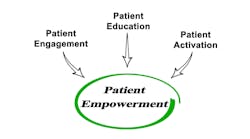How Has COVID-19 Changed Patients’ Healthcare Preferences?
The pandemic has spurred progress across many dimensions of digital health innovation, including the patient access experience. For example, healthcare organizations had to quickly adopt a “digital-first” mentality, ramping-up virtual care visits and online scheduling to prevent care gaps and expand self-service options for arranging care.
At the same time, consumers’ preferences and expectations about healthcare have correspondingly shifted. Now, a new survey of 1,000 U.S. consumers from patient access solutions company Kyruus reveals key insights on peoples’ experiences during the pandemic and the permanent impact it has made on their future care decisions.
As has been reported elsewhere throughout the health crisis, this survey found that many consumers have put their care on hold during the pandemic, with safety their primary concern (48 percent), followed by recommendations from a provider or healthcare organization to postpone care (30 percent). Over 50 percent of respondents reported delaying some type of care (e.g., routine, specialty, mental health, or surgical care) during the pandemic.
More specifically broken down, when asked about specific care types applicable to them, people were most likely to have delayed routine care (42 percent), followed by surgical care (38 percent) and specialty care (37 percent). Those seeking mental health services were least likely to have delayed care during the pandemic, with only 30 percent delaying this type of care completely. Going forward, when looking at the rest of 2021, almost 60 percent of people do not plan to delay in-person care, but uncertainty persists for the remainder: 20 percent plan to push out care and 22 percent are unsure.
Meanwhile, hybrid care delivery—through a combination of virtual and in-person visits—is likely here to stay, according to the survey. Over 40 percent of people indicated a preference for accessing routine and/or mental healthcare entirely virtually or through a combination of virtual and in-person visits. the data showed.
Prior to the pandemic, research has shown that patient awareness of telehealth has been quite low; a 2019 survey from marketing services company J.D. Power revealed that nearly three-fourths of Americans said they either didn’t have access or were unaware of telehealth options. Of course, with many in-person visits shut down at the onset of COVID-19, patient awareness of virtual care options significantly grew. The Kyruus data finds that 62 percent of respondents had a virtual care visit of some kind in the past 12 months, and for 71 percent it was their first ever virtual visit.
While it hasn’t displaced in-person care, virtual care has gained major ground: going forward, consumers are more likely to choose virtual visits than they were pre-pandemic, with two-thirds of respondents stating they are equally or more likely to choose a virtual visit than before. Furthermore, when asked how access to virtual care will impact their choice of where to obtain care in the future, nearly two-thirds of all respondents (63 percent) said it will be an important factor in their decision making. Additionally, of those who fell in this category, 40 percent said they would switch providers for the option to have virtual visits.
Consumers also reported in the survey that convenience and cost supersede loyalty for deciding where to seek care. Respondents ranked insurance accepted (48 percent) and ability to obtain timely care (37 percent) highest among key decision criteria. Less than 25 percent cited loyalty.
Ultimately, as the patient access experience underwent a rapid evolution during the pandemic, healthcare organizations worked to maintain patient satisfaction and loyalty amid these changing circumstances, researchers pointed out.
Results show that their efforts had a positive impact, though opportunities for improvement remain. Among respondents who obtain all of their care at one organization, 35 to 40 percent reported high levels of satisfaction across key areas: enabling access to virtual visits, proactive communication, access to COVID-19 testing, and proactive vaccine updates. At the same time, there is still room to boost satisfaction for the remainder—approximately 60 percent—who were dissatisfied or only somewhat satisfied.


